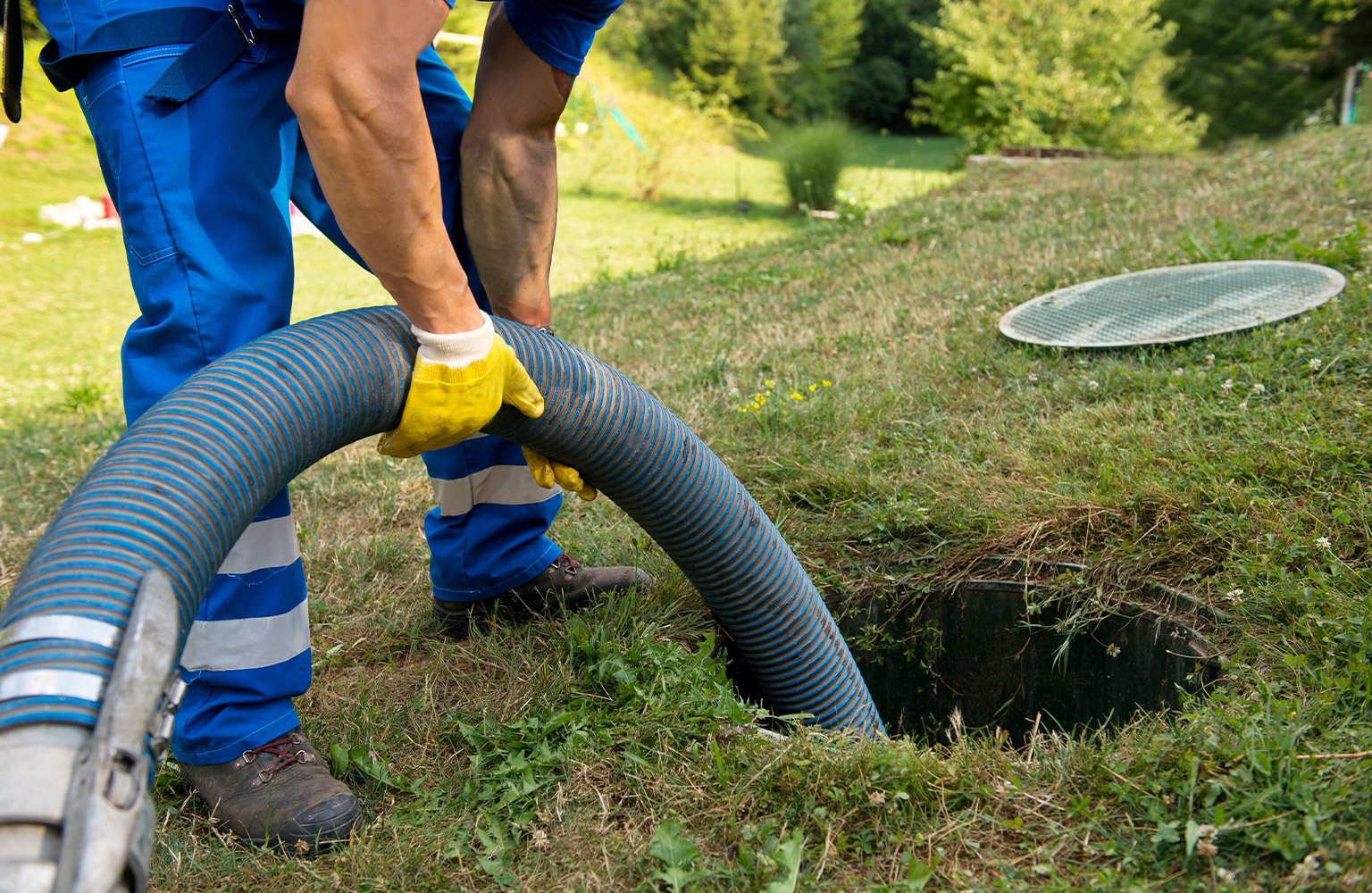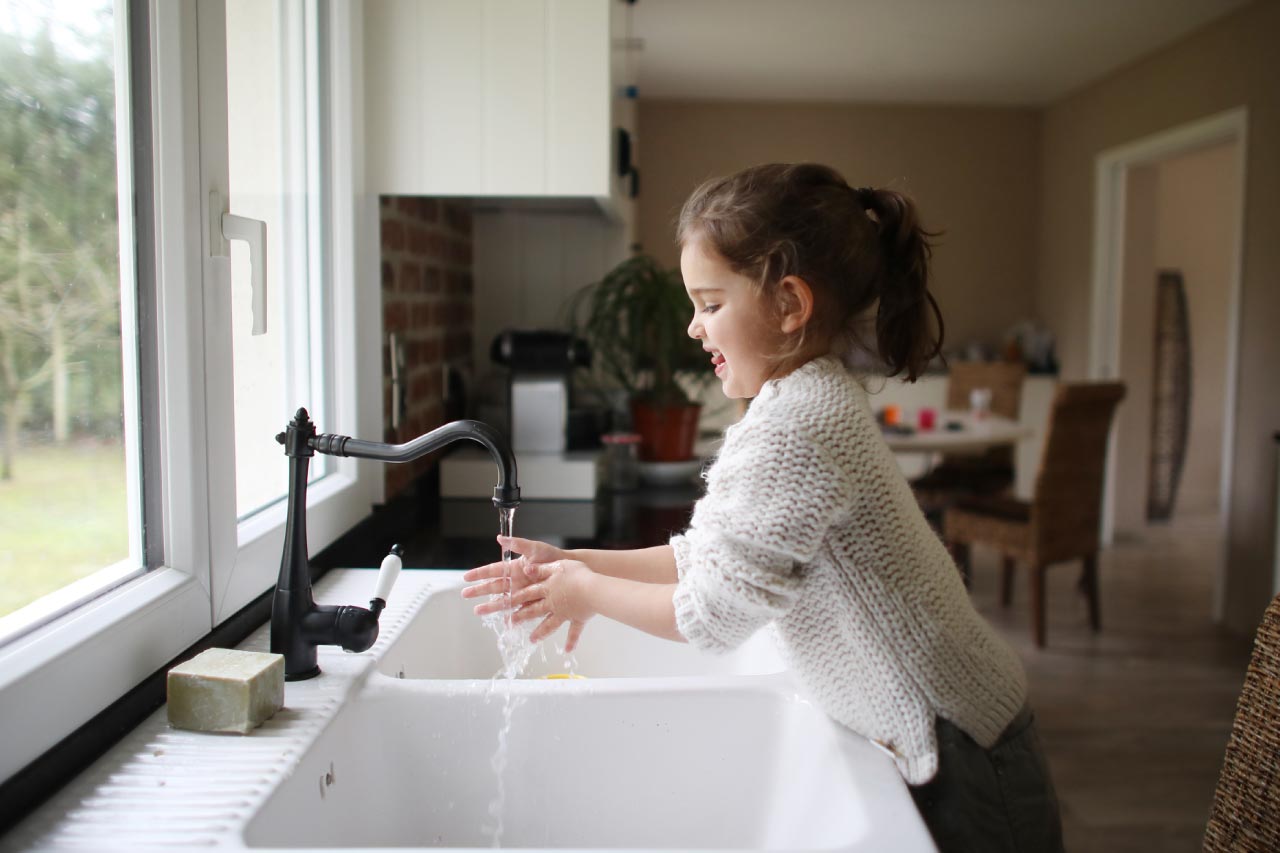
Wondering who to call for septic problems? Learn when to hire plumbers vs septic pros, warning signs, and average repair and pumping costs
Budget for a new septic system using our handy guide


Average septic system installation costs $8,032.
Cost factors include system size, type, materials, and labor rates.
Additional expenses may include excavation, permits, and soil tests.
A quality septic system ensures efficient wastewater management and protects property value.
This article was created using automation technology and thoroughly fact-checked and edited by HomeAdvisor Editor Ryan Noonan.
The average cost to install a septic system ranges from $3,606 to $12,458, with most homeowners spending around $8,032. Your total price depends on factors like system size, type, materials, and location. Installing a reliable septic system is essential for effective wastewater management and keeping your home running smoothly. Here's what you need to know to budget for this important project.
Labor costs typically account for 50% to 70% of your septic system installation cost. Installing the tank often costs more than the tank itself. For example, while a tank for a three- to four-bedroom home might cost $900 to $1,500, installation can range from $1,500 to $4,000.
Several professionals contribute to a successful septic system installation:
Septic System Installers ($1,500–$4,000): They handle the overall installation, placing the tank and connecting it to your home's plumbing.
Excavation Contractors ($1,500–$6,300): They prepare the site by digging where the tank and leach field will be installed.
Soil Engineers ($700–$2,000): They perform percolation tests to ensure your soil is suitable for a septic system and meets local regulations.
Hiring experienced professionals ensures your septic system is installed correctly and will last for years to come.
The price of a septic tank depends on its size. Larger homes require a larger tank that can accommodate a larger household.
| Tank Gallon Size | House Size | Average Price Range |
|---|---|---|
| 500 | 1 bedroom | $500–$900 |
| 750 | 2 bedrooms | $700–$1,200 |
| 1,000 | 3–4 bedrooms | $900–$1,500 |
| 1,200 | 5–6 bedrooms | $1,200–$1,600 |
| 1,500 | 6–7 bedrooms or small duplex | $1,500–$2,500 |
Septic systems can be either anaerobic or aerobic. Anaerobic systems are the traditional choice, using bacteria that don't require oxygen to break down waste. They are less expensive but need a larger leach field.
Aerobic systems use oxygen-loving bacteria to break down waste more efficiently. They are more expensive but require a smaller leach field due to higher-quality effluent. Aerobic systems are a good choice for smaller properties.
An anaerobic septic system costs $3,000 to $8,000 to install. It uses bacteria that don't require oxygen to break down waste. These systems are less expensive but need a larger leach field.
An aerobic septic system costs $10,000 to $20,000. It uses oxygen-loving bacteria to break down waste more efficiently and requires a smaller leach field. While more expensive, it's a good option for smaller properties.
If you have a small property, high water table, high bedrock, bad soil, or simply want to use less space, then you’ll want an alternative septic system. Check out the cost of alternative options:
| Septic Type | Average Price Range | Average Cost |
|---|---|---|
| Chambered | $5,000–$12,000 | $8,500 |
| Built wetland | $5,000–$12,000 | $11,500 |
| Sand filter | $7,000–$18,000 | $12,500 |
| Evapotranspiration | $10,000–$15,000 | $12,500 |
| Drip | $8,000–$18,000 | $13,000 |
| Mound | $10,000–$20,000 | $15,000 |
Chambered systems cost $5,000 to $12,000 to install. They use plastic perforated chambers around pipes, often set in sand, eliminating the need for gravel. They're quick and easy to install but more susceptible to crushing forces, like vehicles.
Built wetland systems cost $5,000 to $12,000 to install or more if you use an aerobic tank. They mimic the natural cleansing process found in wetlands and are treated by microbes, plants, and bacteria in a wetland tank before passing to the soil. The waste also supports the wetland plants and the microbial population.
Sand filter septic systems cost $7,000 to $18,000 to install. They're constructed either above or below ground and use a pump chamber to push the wastewater through a sand filter prior to dispersal in the ground. The filter box typically has a PVC lining, and the pump pushes the effluent through the sand and back to the pump tank, where it's then dispersed through the ground.
Evapotranspiration systems cost $10,000 to $15,000 to install. They use a unique drain field setup that allows the liquid to evaporate from the top of an open-air tank, and are only useful in dry, arid climates that see little rain or snow.
Drip systems cost $8,000 to $18,000 to install. They work like other systems, except they use extensive drip tubing and a dosing system. They release smaller, timed doses, which work well in shallow soil depths. But a drip system costs more than a traditional system since it requires a dose tank, pump, and electricity.
A mound septic system costs $10,000 to $20,000 to install. It’s the most expensive system, but often necessary in areas with high water tables, shallow soil depth, or shallow bedrock. It relies upon an elevated sand mound for the drain field rather than excavating into the soil. Its increased expense comes from both the added machinery needed to pump effluent uphill into the mound and the materials and creation of the mound itself.
The material you choose for your septic tank impacts both the cost and durability. Common options include concrete, plastic, and fiberglass:
| Septic Tank Material | Average Price Range (Material Only) | Material Properties |
|---|---|---|
| Concrete | $700–$2,000 | Durable but may crack over time |
| Plastic | $500–$2,000 | Lightweight and resistant to cracking, but can be damaged during installation |
| Fiberglass | $1,200–$2,000 | Strong and won't crack, but can shift in the soil |
Installing a leach (drain) field costs between $5,000 and $12,000. The leach field disperses wastewater into the soil. Signs of leach field problems include soggy spots or sewage odors in your yard. Replacing a drain field can cost around $7,000.
Replacing a septic tank costs between $3,000 and $10,000, which is less than installing a new system since excavation is already done. Before deciding to replace, consider repairing your existing tank. Small issues like cracks or minor leaks can often be repaired for $200 to $4,000, depending on the damage. If repair costs exceed 50% of the replacement cost, it might be more cost-effective to replace the tank.
When assessing whether to repair or replace your septic tank, consider factors like the age of your system, the severity of the problem, and any existing warranties. For tanks nearing the end of their 15- to 20-year lifespan, replacement may be more cost-effective in the long run. Also, the "50% rule" suggests that if repair costs exceed 50% of the cost of a new system, it's generally wiser to replace.
If you need to replace the whole tank, there are additional costs to be aware of. For example, you'll need to have the tank pumped and cleaned first to eliminate any remaining waste. Septic tank pumping costs around $300 to $600, depending on the tank size.
Common septic tank repairs and their average costs include:
Septic tank pump replacement: $800–$1,400
Baffle replacement: $300–$500
Filter replacement: $230–$280
Tank lid replacement: $30–$70
Crack sealing and patching: $500–$4,000
Signs that your septic system may be failing include unpleasant odors, soggy spots in your yard, slow drains, or sewage backups. These issues can indicate that the tank is leaking or the drain field is saturated. If you notice these problems, it's important to consult a professional promptly, as you may need a repair or replacement.
When replacing your system, consult with your service pro about the pros, cons, and costs of upgrading to a more efficient aerobic system. Remember, investing in a new system can provide better efficiency, longer lifespan, and peace of mind.
In addition to the tank and leach field, there are other costs to consider in your budget. These may include:
Building permits ($450–$2,300): Required to ensure your installation meets local regulations.
Septic tank riser ($300–$600): Makes accessing your tank easier for maintenance.
Septic distribution box ($500–$1,500): Evenly distributes wastewater from the tank to the leach field.
Installing a septic system is a complex task that's best left to a professional. A properly installed system safeguards your home and the environment, preventing costly problems in the future. Obtaining the right permits is crucial for ensuring your home remains market-ready and insurable. To find the right fit for your project, consider interviewing at least three reputable septic system professionals in your area. Hire a local septic system professional to ensure a proper installation.
No place is more important than your home, which is why HomeAdvisor connects homeowners with local pros to transform their houses into homes they love. To help homeowners prepare for their next project, HomeAdvisor provides readers with accurate cost data and follows strict editorial guidelines. We surveyed thousands of real customers about their project costs to develop the pricing data you see, so you can make the best decisions for you and your home. We pair this data with research from reputable sources, including the U.S. Bureau of Labor Statistics, academic journals, market studies, and interviews with industry experts—all to ensure our prices reflect real-world projects.
From average costs to expert advice, get all the answers you need to get your job done.

Wondering who to call for septic problems? Learn when to hire plumbers vs septic pros, warning signs, and average repair and pumping costs

Budget for well pump repair costs based on factors such as parts and components, location, pump type, labor, inspections, and more.

Budget for septic tank repair costs based on factors including parts, materials, labor, ongoing maintenance costs, and more.

When calculating the cost to pump a septic tank, you need to consider the size of the tank, how often it needs to be pumped, and the maintenance of the tank.

Use this guide to budget for a septic system inspection based on cost factors such as inspection type, accessibility, and additional septic services.

If you need to replace your well pump, you should budget based on the well pump type, size, and labor rates in your area.